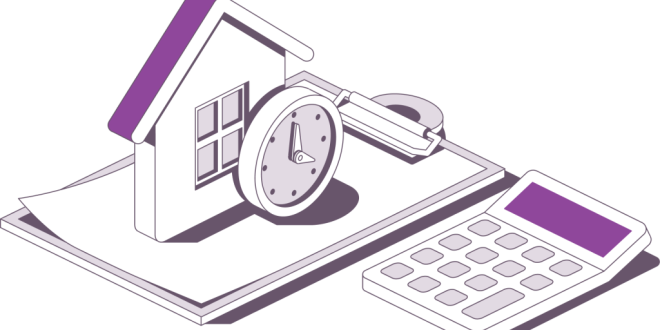In today’s world, where environmental concerns are growing, making eco-conscious choices when it comes to our homes is not just a trend but a responsible way to live.
But what does eco-friendly design for sell and rent back homes really mean? It’s about using smart ideas and technologies that reduce energy consumption, conserve water, and minimize waste. It’s also about creating a healthy indoor environment and using materials that have a smaller impact on our Earth. In this blog, the five key aspects of eco-friendly design that you should know.
Passive Solar Design
Passive solar design is a smart and eco-friendly approach to heating and cooling your home using the power of the sun. It’s all about capturing and utilizing the sun’s energy to maintain comfortable temperatures indoors without relying heavily on artificial heating or cooling systems.
One way to achieve this is by strategically positioning your home’s windows and walls to maximize natural sunlight during the winter months. South-facing windows, for example, can let in the sun’s warmth, reducing the need for heating. Additionally, thermal mass materials like concrete or stone floors can absorb this heat and release it slowly, keeping your home cozy throughout the night.
In contrast, during hot summer months, you can use shading devices like awnings or deciduous trees to block out excessive sunlight and prevent your home from overheating. This reduces the need for air conditioning, saving energy and money.
For example, imagine having large, well-placed windows in your living room that flood the space with sunlight on a cold winter morning. Or think about a vine-covered trellis shading your bedroom window in the scorching summer heat, allowing you to stay cool naturally.
Rainwater Harvesting
Rainwater harvesting is a clever and eco-friendly way to collect and store rainwater from your home’s roof for various beneficial uses. By doing this, you can reduce your reliance on the municipal water supply and contribute to water conservation efforts.
One of the simplest rainwater harvesting methods is installing gutters and downspouts on your roof to direct rainwater into a storage tank or barrel. From there, you can use the collected rainwater for tasks like watering your garden, filling a birdbath, or even flushing toilets.
For example, picture a large rain barrel positioned under a downspout, collecting rainwater during a heavy downpour. This stored rainwater can then be used to keep your garden lush and green during dry spells, reducing your overall water consumption.
Rainwater harvesting not only conserves water but also helps prevent stormwater runoff, which can carry pollutants into local water bodies. By using rainwater for non-potable purposes, you’re reducing the burden on your local water treatment facility and promoting a more sustainable water cycle.
Sustainable Materials
Using sustainable materials in your sell and rent back home is a significant step toward reducing your environmental footprint. Sustainable materials are those that are sourced, produced, and used in ways that have minimal impact on the environment and contribute to long-term ecological balance.
For example, consider using reclaimed wood for your flooring or furniture. Reclaimed wood is salvaged from old buildings or structures, giving it a new life and preventing the need to cut down more trees. This not only reduces deforestation but also adds character and uniqueness to your home’s design.
Another eco-friendly option is bamboo, which is a rapidly renewable resource. Bamboo grows much faster than traditional hardwoods, making it an excellent choice for flooring, countertops, and even cabinets.
When it comes to insulation, you can opt for materials like recycled denim or cellulose, which are made from recycled paper. These materials offer excellent thermal properties while diverting waste from landfills.
Efficient HVAC Systems
Efficient HVAC (Heating, Ventilation, and Air Conditioning) systems are a vital component of an eco-friendly sell and rent back home. These systems play a significant role in regulating indoor temperature and air quality while minimizing energy consumption and environmental impact.
One example of an efficient HVAC system is a modern heat pump. Heat pumps can both heat and cool your home, and they operate by moving heat rather than generating it. This makes them much more energy-efficient than traditional heating and cooling systems. For instance, during the winter, a heat pump extracts heat from the outside air and pumps it indoors to warm your home.
Another efficient HVAC option is a programmable thermostat, which allows you to set specific temperature schedules for different times of the day or week. This helps you avoid unnecessary heating or cooling when nobody is home, reducing energy waste and utility bills.
Energy-Efficient Windows and Insulation
Energy-efficient windows and insulation are key components in creating an eco-friendly and comfortable living environment. These features help to keep your home well-insulated, reduce energy consumption, and lower your heating and cooling costs.
Energy-efficient windows, often equipped with low-E (low emissivity) coatings and multiple panes, are designed to minimize heat transfer. They can keep your home warmer in the winter by preventing heat from escaping and cooler in the summer by blocking out excessive heat from the sun. For example, double-paned windows with argon gas between the panes provide excellent insulation and reduce the need for heating and cooling.
Incorporate Eco-Friendly Design into Your Home Today!
In conclusion, incorporating eco-friendly design principles into your sell and rent back home can be a strategic choice that attracts more buyers and renters. These forward-thinking features not only benefit the environment but also enhance the overall appeal of your property.
By integrating elements such as passive solar design, rainwater harvesting, sustainable materials, efficient HVAC systems, and energy-efficient windows and insulation, you’re not only making your home environmentally conscious but also cost-effective and comfortable. Potential buye are increasingly seeking properties that offer these sustainable advantages.
As the global emphasis on environmental sustainability grows, embracing eco-friendly design for sell and rent back homes not only adds value to your property but also broadens its appeal to a wider audience.
 HammBurg Be informed with latest news, reviews, entertainment, lifestyle tips, and much more.
HammBurg Be informed with latest news, reviews, entertainment, lifestyle tips, and much more.




